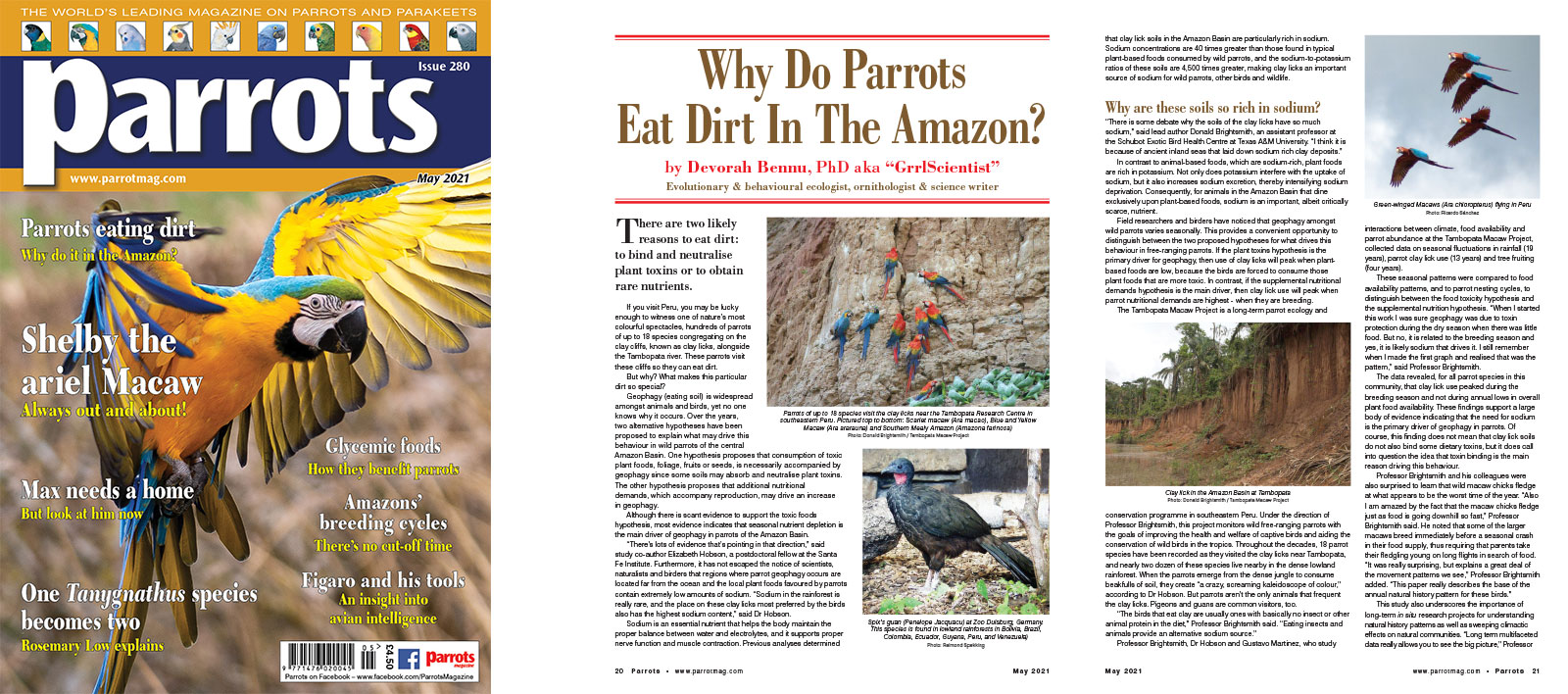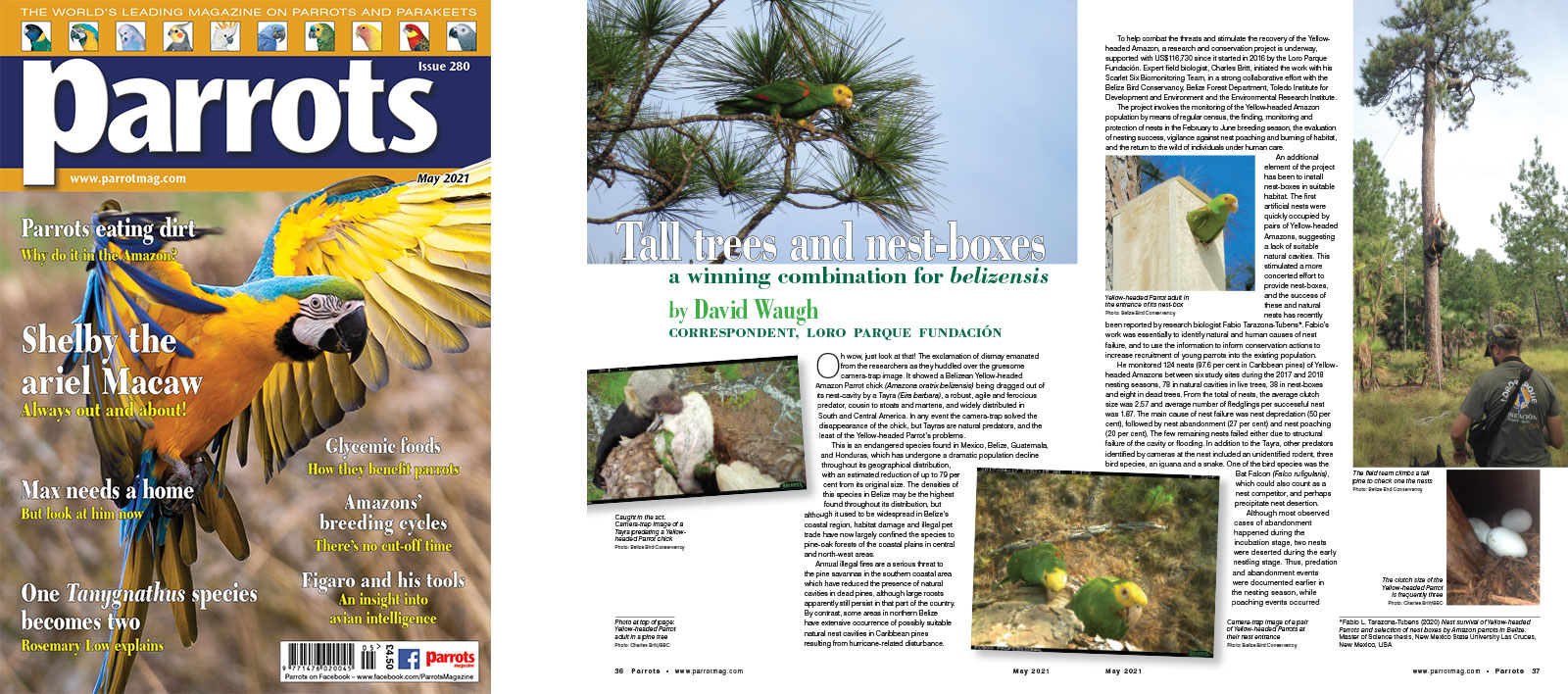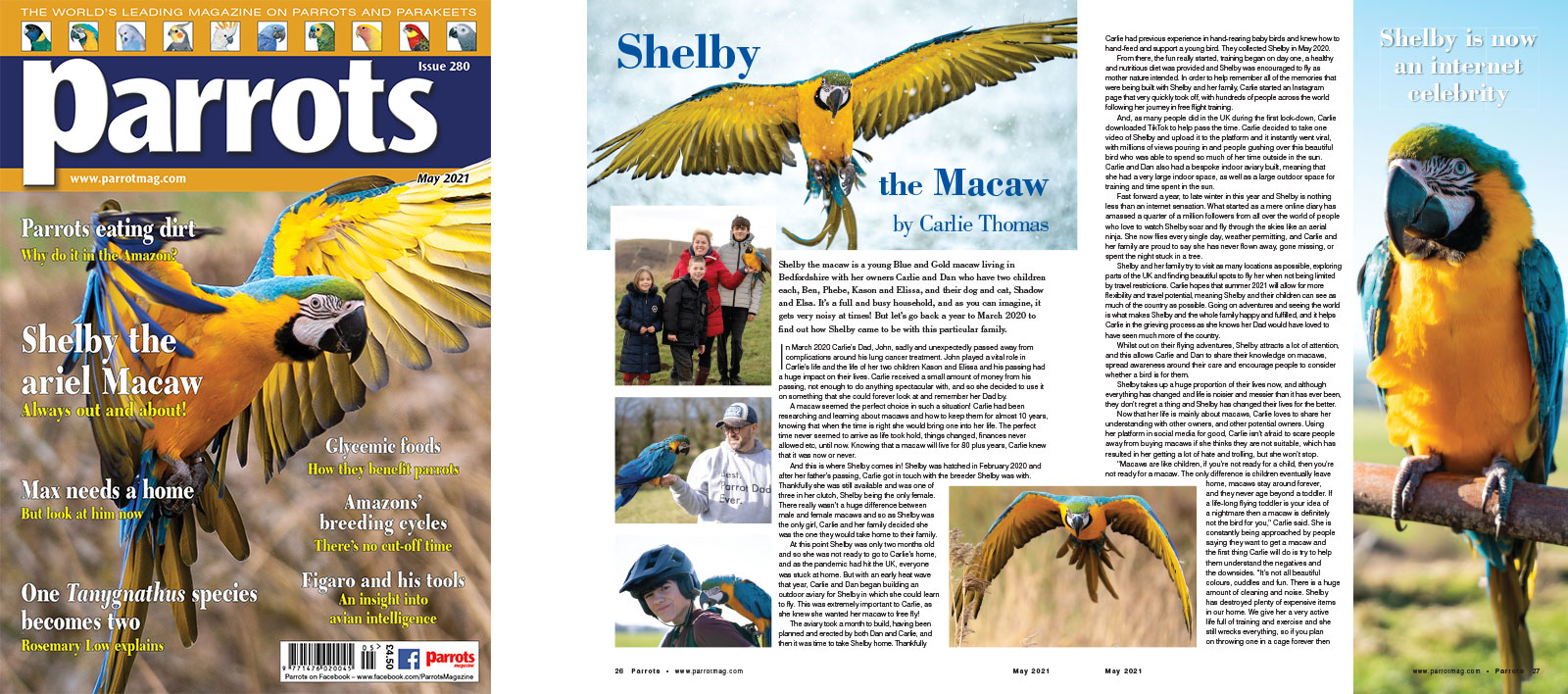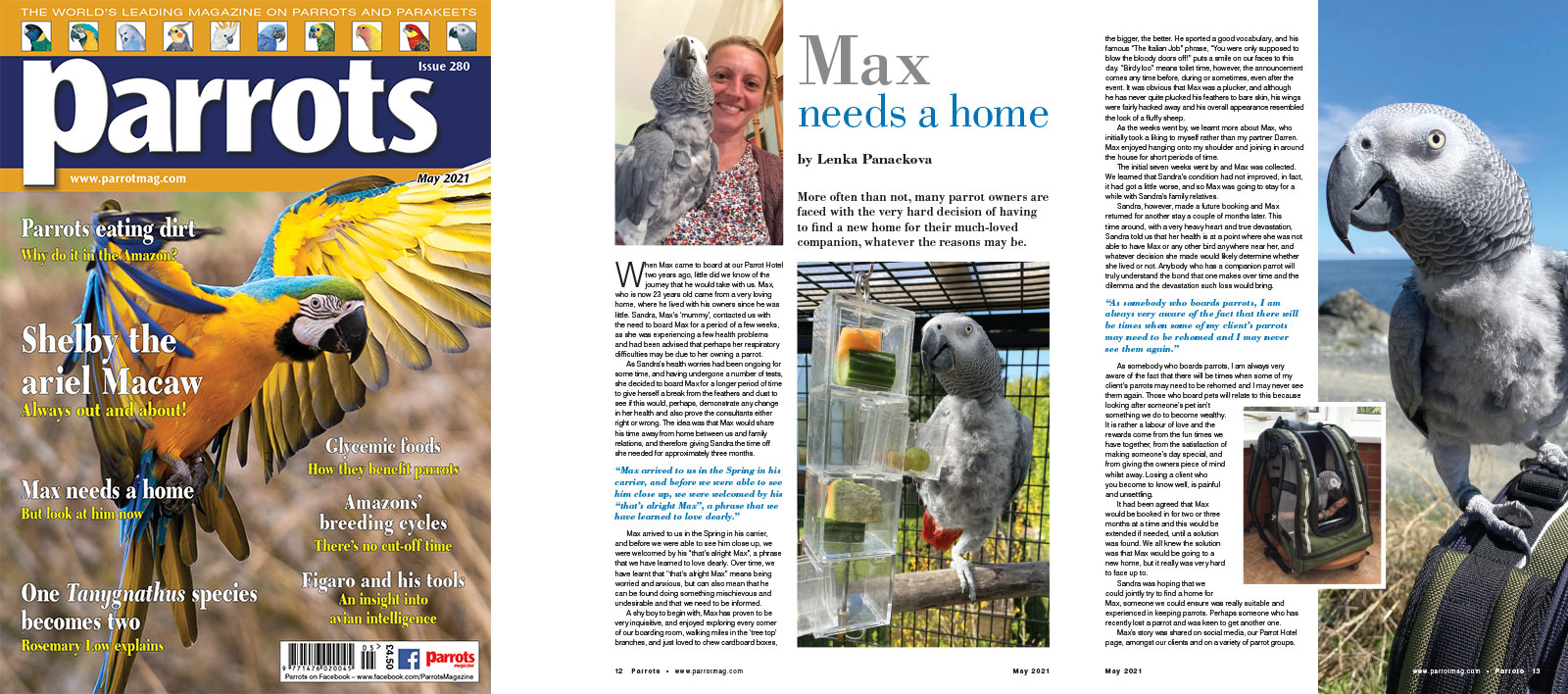
By Devorah Bennu, PhD aka “GrrlScientist”. Evolutionary & behavioural ecologist, ornithologist & science writer
There are two likely reasons to eat dirt: to bind and neutralise plant toxins or to obtain rare nutrients.
If you visit Peru, you may be lucky enough to witness one of nature’s most colourful spectacles, hundreds of parrots of up to 18 species congregating on the clay cliffs, known as clay licks, alongside the Tambopata river. These parrots visit these cliffs so they can eat dirt.
But why? What makes this particular dirt so special?
Geophagy (eating soil) is widespread amongst animals and birds, yet no one knows why it occurs. Over the years, two alternative hypotheses have been proposed to explain what may drive this behaviour in wild parrots of the central Amazon Basin. One hypothesis proposes that consumption of toxic plant foods, foliage, fruits or seeds, is necessarily accompanied by geophagy since some soils may absorb and neutralise plant toxins.
The other hypothesis proposes that additional nutritional demands, which accompany reproduction, may drive an increase in geophagy.
Buy Now!

By David Waugh, Correspondent, Loro Parque Fundación
Oh wow, just look at that! The exclamation of dismay emanated from the researchers as they huddled over the gruesome camera-trap image. It showed a Belizean Yellow-headed Amazon Parrot chick (Amazona oratrix belizensis) being dragged out of its nest-cavity by a Tayra (Eira barbara), a robust, agile and ferocious predator, cousin to stoats and martens, and widely distributed in South and Central America. In any event the camera-trap solved the disappearance of the chick, but Tayras are natural predators, and the least of the Yellow-headed Parrot’s problems.
This is an endangered species found in Mexico, Belize, Guatemala, and Honduras, which has undergone a dramatic population decline throughout its geographical distribution, with an estimated reduction of up to 79 per cent from its original size. The densities of this species in Belize may be the highest found throughout its distribution, but although it used to be widespread in Belize’s coastal region, habitat damage and illegal pet trade have now largely confined the species to pine-oak forests of the coastal plains in central and north-west areas.
Annual illegal fires are a serious threat to the pine savannas in the southern coastal area which have reduced the presence of natural cavities in dead pines, although large roosts apparently still persist in that part of the country. By contrast, some areas in northern Belize have extensive occurrence of possibly suitable natural nest cavities in Caribbean pines resulting from hurricane-related disturbance.
Buy Now!

By Carlie Thomas
Shelby the macaw is a young Blue and Gold macaw living in Bedfordshire with her owners Carlie and Dan who have two children each, Ben, Phebe, Kason and Elissa, and their dog and cat, Shadow and Elsa. It’s a full and busy household, and as you can imagine, it gets very noisy at times! But let’s go back a year to March 2020 to find out how Shelby came to be with this particular family.
In March 2020 Carlie’s Dad, John, sadly and unexpectedly passed away from complications around his lung cancer treatment. John played a vital role in Carlie’s life and the life of her two children Kason and Elissa and his passing had a huge impact on their lives. Carlie received a small amount of money from his passing, not enough to do anything spectacular with, and so she decided to use it on something that she could forever look at and remember her Dad by.
A macaw seemed the perfect choice in such a situation! Carlie had been researching and learning about macaws and how to keep them for almost 10 years, knowing that when the time is right she would bring one into her life. The perfect time never seemed to arrive as life took hold, things changed, finances never allowed etc, until now. Knowing that a macaw will live for 80 plus years, Carlie knew that it was now or never.
Buy Now!

By Lenka Panackova
More often than not, many parrot owners are faced with the very hard decision of having to find a new home for their much-loved companion, whatever the reasons may be.
When Max came to board at our Parrot Hotel two years ago, little did we know of the journey that he would take with us. Max, who is now 23 years old came from a very loving home, where he lived with his owners since he was little. Sandra, Max’s ‘mummy’, contacted us with the need to board Max for a period of a few weeks, as she was experiencing a few health problems and had been advised that perhaps her respiratory difficulties may be due to her owning a parrot.
As Sandra’s health worries had been ongoing for some time, and having undergone a number of tests, she decided to board Max for a longer period of time to give herself a break from the feathers and dust to see if this would, perhaps, demonstrate any change in her health and also prove the consultants either right or wrong. The idea was that Max would share his time away from home between us and family relations, and therefore giving Sandra the time off she needed for approximately three months.
Buy Now!




